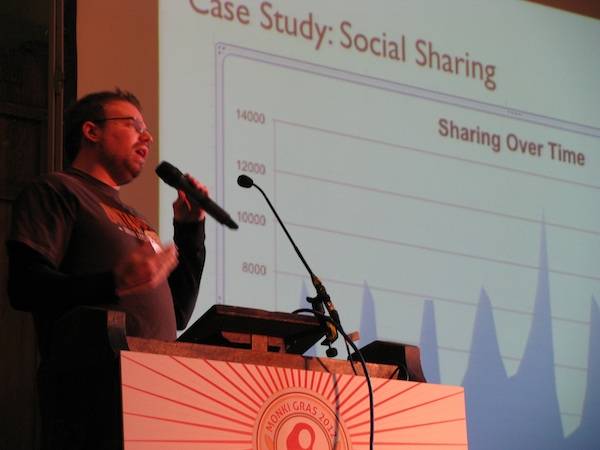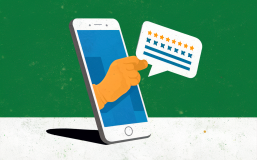What do you drink when you’re out at the bar? What do you brag about afterwards? If you’re like a lot of Untappd users in the United States, they’re not the same thing. At least that’s what the data from Untappd suggests, according to lead developer and co-founder Greg Avola.

Avola spoke on February 1st in London at the Monki Gras. As part of a larger talk about Untappd and its growth, Avola talked about the aggregated data that the company has gleaned from user shares via the Untappd app.
Previously, Avola had spoken at the inaugural Monktoberfest event about the Untappd app and the company’s strategy. Untappd is a new social network with a native iOS and Android app, as well as a mobile site for platforms without a native app. Users can “check in” to beers that they’ve tried, and share the beers on social networks like Twitter and Facebook if they choose.
But do they choose? That depends a lot on what they drink, according to Avola.
Users, especially in the United States, check in a lot of mass market beers that aren’t seen as very high quality. For instance, Coors Light or Bud Light. There’s no status in sharing those beers, though, and so users tend not to. On the other hand, they do tend to share craft beers or beers that are higher status like Sierra Nevada or Lagunitas Sucks Holiday Ale.
Interestingly, Avola also showed the aggregated data from the UK and found that it was much more closely correlated between what users drank and shared. Perhaps that has something to do with the quality of mass market beers found in the UK, or the strength of craft beers here. (Something we’ll be testing tonight at the evening activity for Monki Gras.)
It’s not just the beverages that users tend to clam up about. Avola noted that people tend to share less, even when they check in, about drinking during the week or daytime. Not surprisingly, even if you have a fantastic beer in the airport before a flight, you probably don’t want your social graph seeing that you had a beer at noon.
Social Sharing: You’re Doing It Wrong
On a similar note, Matt LeMay reprised his Kitteh vs. Chikin talk from Monktoberfest about what users share versus what they click. Users share links that make them look smart, they click links that… well, don’t. For example, links about the Kardashian family do very well. Nobody looks smart following them, though, and a lot fewer users share those links.
LeMay says that users are busy building a persona on social media of what they want to look like, rather than who they really are. And that’s a shame. What might seem embarrassing is also what makes us interesting. LeMay says that users “shouldn’t run from it. Like beer, just because it can be bad for you if you drink too much, we should still embrace it. People who act like brands [on social media] are assholes. We hate them.”
If you’re ashamed to post your beers, maybe you shouldn’t be. Certainly, it distorts reality if you observe friends sharing their beverage choices only when quaffing craft or high-quality beers (and high-quality links).
Beer and Gamification
Sometimes, though, reality needs a little kick in the pants. If you want to influence what people are drinking, you have to provide motivation. Breweries want to influence users, obviously and connecting breweries to users is part of Untappd’s business model.

To motivate beer intake, Untapped has introduced the badge system. When users “win” badges for trying new beers, they’re more apt to try them. Avola noted that releasing a badge for drinking three of five beers by Dogfish Head increased the check-ins for that beer by a large amount, and helped the brewery sell more beers. Of course, this is the honor system. Avola says that the breweries do see increases in sales, but it’s impossible to tell if users are actually drinking the beers they’re checking in.
How does all this apply to folks outside of Untappd or Bit.ly? First and most obviously, don’t feel you need to moderate your presence on social media quite so tightly. People might actually be more interested in what you have to say if you let warts and all show. (Within limits, of course. It’s always better to be polite, etc.)
It’s also good to know that what others share may not completely reflect reality. If your company is sampling social media to get feedback, you need to think about what may be influencing people when they share things. If you’re using social media to size up potential employees, you may want to look closely at what they share and consider if they’re showing the real person, or a crafted persona that’s what they think people want to see.
So how about you? Are you a kitteh or a chikin on social media?










